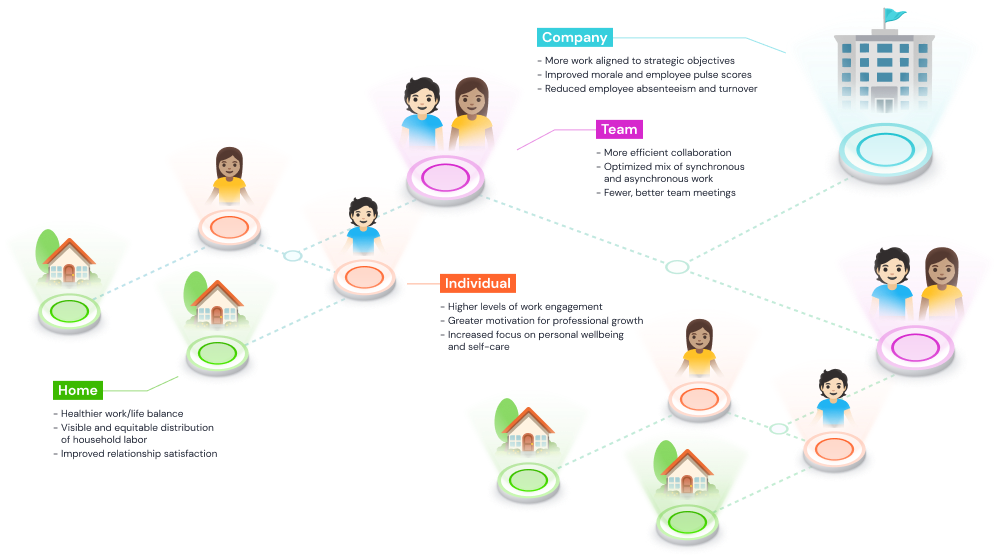
The Butterfly Effect 🦋of Adaptability & Resilience Skills
10 min
January 03, 2023 · 6 min

Burnout is a state of physical, emotional and mental exhaustion. It is the result of prolonged stress and can be caused by a variety of factors such as long hours, lack of control over work or personal life, or too much responsibility. An increasingly common phenomenon in today’s workplace, burnout is often mentioned, but not always fully understood. In order to address such a broad and wide-ranging issue, we must first learn to recognize the signs and stages of burnout. In a 2021 APA Work and Well-being Survey, it was discovered that over ⅓ of U.S. adults experienced work-related cognitive weariness, emotional exhaustion or physical fatigue, an increase of 38% since 2019. This is an astoundingly high percentage of workers that are if not already burnt out, are certainly on the path to burnout. Chronic stress and fatigue need to be combated with regular preventative measures, but how can you tell the difference between simply ‘being tired at work’, versus physical, mental or emotional exhaustion? Our guide to the 5 Stages of Burnout is here to help identify the signs and symptoms of chronic stress and set you on a path to prevent burnout from interfering with your life.
Burnout can affect anyone, in any job, at any point in their life. While the average worker may experience career burnout by age 32, the signs and symptoms can vary from person to person. This guide offers a common framework for identifying the stages of burnout and can help you, a loved one or a co-worker understand how far along the path someone may be.
The honeymoon phase of burnout is a period of time where a person feels excited and motivated in their work. When you take on a new task or business opportunity, you often experience high levels of energy and job satisfaction. Starting a new job certainly comes with its own cadre of challenges and new stressors, and you will likely begin to experience some of the initial stress of the job. As with all preventative health, it is critically important that you start to practice positive coping strategies (a topic we will cover more in depth in a future article) in order to learn how to manage this stress. With the right tools in place, it is possible to remain in the Honeymoon phase indefinitely.
Common Symptoms:
Without the proper coping mechanisms in place, or often simply because of external factors beyond your control, the onset of stress begins to occur. You are not stressed every minute of the day, but you may begin to notice certain changes like loss of focus or simply finding yourself less productive during the day. Physical fatigue may start to become an issue and you may be less likely to take on activities outside of work.
Common Symptoms:
The third, and final stage before actual burnout, is chronic stress. You will reach a point where stress becomes a common occurrence and starts to shape your everyday life. This will likely be accompanied by a lack of motivation and a consistent level of anxiety. Apathy can start to set in and you may feel withdrawn from work, your social life, or activities at home. In some, this may manifest itself in anger or frustration, as it can often be difficult to deal with the elevated levels of stress.
Common Symptoms:
Stage four of the cycle is burnout itself. Once stress has consumed enough of your daily life in a chronic fashion, it can be increasingly difficult to cope. Problems, even minor ones, will begin to consume you to the point where it is difficult to maintain a healthy and consistent lifestyle. Individuals often experience a sense of numbness or dissociation that can lead to a troubling sense of self-doubt and even a lack of self-worth. Friends and co-workers will likely start to notice serious changes in your personality and interactions with others.
Common Symptoms:
Many have experienced burnout at some point in their lives, but if left untreated, burnout can become an embedded feature of your life. This can lead to serious mental, physical and emotional issues that can take significant effort to address.
Common Symptoms:
While there is certainly a difference between simply being tired at work versus full burnout, it is important to recognize the potential symptoms of burnout and address them before the cycle can continue. Even simply reading about this can obviously cause enormous amounts of stress and anxiety, but there is good news! First, it is important to be honest with yourself and gain a clear understanding of where you are in the process. Identifying the problem will be the first step.
Building proactive coping mechanisms will ensure that you have the tools to address the issues head on and combat the cycle of burnout. Like many other challenges in a work setting, acquiring the right set of skills can allow you to be more confident and successfully navigate the problem. Burnout is becoming a more understood topic, and there are a number of resources available for you to address your well-being.
There is no one-size-fits-all answer to how long it takes to recover from burnout. However, it can take anywhere from a few weeks to a few months. There are many factors that can determine how long a person will take to recover from burnout. These factors include the person’s physical and emotional health, their work environment, and the severity of their burnout.
Talk to your co-workers, your friends, your family and be honest about the situation. You may need to take time off of work or re-evaluate your work-life balance. Try to understand your limitations and avoid overextending yourself. In today’s flexible and work from home environment, it can be difficult to separate yourself from the hassles of work and you may feel constantly ‘on.’ Taking the time to establish a work schedule that truly works for you can be a positive step forward in combating or recovering from burnout. And of course if you continue to struggle with burnout, do not feel that you are alone. It may be necessary to talk to a healthcare professional and seek outside help to find a sustainable solution.
A study by Monster.com recently showed 69% of employees working from home experiencing burnout symptoms. While working outside of a formal office setting brings lots of benefits, there can also be challenges which, over time, can lead to a deterioration in mental health, as shown in this article from The Psychologist.
BillionMinds embeds skills in employees that may help avoid low level burnout. For more information and a further discussion on burnout, you can listen to the BillionMinds founders, Paul and Ryan, discuss the subject in depth.